Mere colour can speak to the soul in a thousand different ways ∼ Oscar Wilde

Happy Holi to all of you! My feelings, emotions and nostalgia about Holi havn’t changed much since last year and they unfold in the manner written below:
Holi, the festival of colours, is one of the most famous of all Indian festivals. The entire land as well as the people of India turns into a big canvas on which colours are smeared upon. I’m always debating as to which Indian festival is more popular – Holi or Diwali? And which is more fun – the blurbs of colours in Holi or the bursting of crackers during Diwali? If you are in India, there isn’t any debate. You can have a super colourful Holi and a very noisy Diwali without getting into any trouble with the law! But, if you happen to live outside India, then, Holi might be more of a nostalgia for some. Not all places outside India may have the opportunity to chance upon organised Holi events like in Dubai (or many other cities outside India) where one can have a boisterous Holi. I have grown up in Kolkata amidst celebrations of all kinds of festivals irrespective of any religion. This is a topic that I have written and re-written about a lot of times. Though we have re-created the festive moments outside India in whichever city we have stayed in, I miss all the festive fervour. In general, the festive spirit of a particular festival doesn’t float everywhere in a foreign land. The playing with colours doesn’t happen in each Muhalla (neighborhood) or each Galli (street and alley). In Dubai there are places where Holi events are organised and one can experience boisterous Holi fun just like in India. There are beaches and parks with designated areas where one can actually ‘play’ with Holi colours. Each year the temptation of playing with Abir or Gulal (the powdered colour), dancing to the DJ’s mixes and re-mixes, savouring on Mithais (Sweets) increases but I've always resisted since the Z-Sisters are still very apprehensive with the smearing of colours.

Somethings don’t change: Like leopards don’t change their spots, Homo Sapiens never cease to be show-offs! And I like that. I’m talking about the post-Holi Facebook photo exchange of friends all over the world – from Washington to Singapore and every other city in between. Who played the most colourful Holi this time? We are back being school kids trying to compete and show off. The winner of course has to be the one whose colour lasts the most and doesn’t come off even after days after having played the Holi!
Bengalis celebrate Dol Purnima, not Holi
In Bengal and Orissa, Dol Purnima or Dol Jatra (Purnima denotes Full Moon while Jatra denotes journey) is celebrated and colours are played on the Full Moon day which falls on a day before the Holi. This marks the arrival of Boshonto or the Spring and is also called Basantotsav (Festival of Spring). As I grew up surrounded by history in the Magistrate’s House, the heritage house in Alipore (below), Dol had a completely different connotation. The date would fall either one or two days before or after or on the day of my birthday itself, giving me the notion that Dol was a celebration for my birthday (humility ran in my veins even as a child!). The entire lawn of the Magistrate’s house would be smeared with Abir or the coloured powder. It’s interesting to know how the coloured powder takes the name Abir… in Bengali, the word refers to the particular reddish color of the sky during dusk that forms at the edge western horizon. Ancient Bengali scholars named this color which is in between Pink and Red as the colour Abir. To make our Dols more colourful, we would mix the colours in a small open water tank that was there in the garden, meant to be used for watering the plants! My parents must have really tolerant and so in love with life – they didn’t care about the mess nor the coloured finger prints on the walls. On the night just before the Dol-purnima, we would light a bonfire (the Nyara Pora) with a heap of collected twigs from trees and my Ma would be readying herself full-swing with her tumblers full of Thandai. Thandai is a cold drink prepared with a mixture of almonds, fennel seeds, magaztari seeds (watermelon kernel), rose petals, pepper, vetiver seeds, cardamom, saffron, milk and sugar. My Bab’s job was to make an intoxicating version of Thandai by mixing small and big amounts of Bhang (Bhang is a preparation from the leaves and flowers buds of the female cannabis plant and can be smoked or consumed by mixing it in traditional beverages like Thandai). Getting high on Bhang can be really intense (as can be seen in many Bollywood movies). My blogger friend Rajani gives a non-narco version of this super cool flavourful Thandai… {Eat Write Think’s recipe of Thandai}. Also, Anamika adds a twist to this to create a Thandai Ice cream…{Mad Cooking Fusion’s recipe of Thandai Icecream).
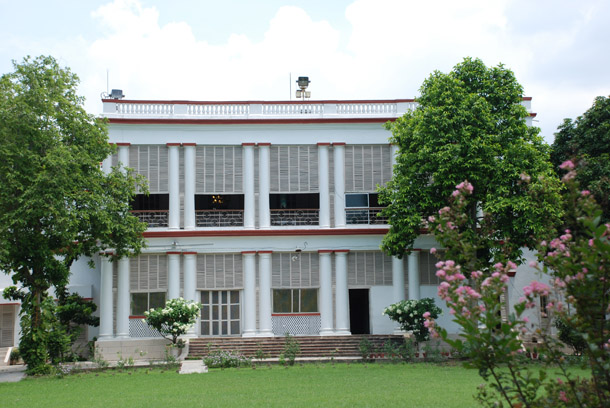
It’s only much later that I realised that Dol was not my personal birthday celebration but had so many religious and cultural connotations… that primarily it was a festival dedicated to Lord Krishna and Dol Jatra meant the procession with bejeweled Lord Krishna on a swinging palanquin (Dol denoting swinging). Also the Abir or the coloured powders originally having medicinal values and derived from flower extracts of Aparajita, Marigold, Hibiscus and Dopati, were smeared on people as a preventive measure against seasonal illnesses like Chicken Pox (also called Boshonto in Bengali) etc. The bonfire too was symbolic, eradicating evil and preparing for new harvest and celebrating the onset of fertility. Ahhh, Indian mythology and the symbolism can be so profound and overwhelming, I tell you! More about the history and the stories behind Holi… in wiki (holi… and bhang, if you are interested in some ethnic intoxication!)

Although I’ve not been able to give a boisterous Holi to the Z-Sister, the rowdiest Holi experience that I’ve been able to give them is playing with dry Abir, that too making sure they have been organic (Organic Abir/Gulal is available in Down To Earth Organic). Yes, punch me if you want… but I have my own reservations as Big Z had been an epileptic child and I don’t want any fun that could turn into a trauma.

Traditional Kulfis and some colourful ones for this Holi… Kulfi is a very popular frozen dessert from the Subcontinent and is popular in countries like India, Pakistan, Bangladesh, Nepal and Burma. Traditionally, Kulfis are prepared by continuously stirring and thickening flavoured Milk until its volume is reduced by almost half. The thickened Milk is poured into sealed Kulhars (above) or Kulfi molds and frozen. Often, they are also set in earthen pots – the Matka Kulfis. Though I got my Kulhars from Kolkata, I’ve seen them being sold in many shops in Meena Bazar in Dubai who sell big aluminum cooking pots and vessels. Since, imagination need no bounds, I’ve also made make-shift Kulfis in muffin molds!
Colourful Kulfis
Ingredients
For the traditional Kulfi
2 lts full cream milk (many prefer to use sweetened condense milk, in which case you will need much less milk and sugar. It also saves on the time taken for stirring and thickening the milk)
2 cups sugar
2 tsp almonds, chopped into thin flakes
2 tbsp pistachios, unsalted and chopped finely
1 tsp rose water
For Mango Kulfi and Strawberry Kulfi
1 ripe mango, pulped out (pulp of ripe mangoes are available in cans in most supermarkets, specially of the Alphanso variety)
6 strawberries, puréed into a paste and sieved
Method
For the traditional Kulfi
- Boil the Milk in a Dekchi/a flat bottomed pan while stirring constantly (Dekchis are usually used for cooking Rice. In the Bengali kitchen, any milk preparation like Payesh/Rice Pudding or Kheer is always made in utensils meant for cooking Rice or in utensils kept exclusively for cooking these dishes. This is because of it’s susceptibility to catching the smell of other cooked food. Constant stirring is required so that the bottom of the pan doesn’t get burnt)
- Once the milk starts to boil, allow the milk to boil in low seam
- Add the Sugar, Cardamom pods and stir in while the Milk thickens and reduces to 1/3 of it’s original volume (if using sweetened condensed milk, add it only after the Milk has started to boil. Add Sugar according to taste)
- Add the chopped Almonds and Pistachios and Rose Water once the Milk has reduced and stir them in
- Pour the thickened Milk into Kulfi moulds and let them cool completely
- Put the Kulfi molds into the freezer for a minimum of 2 hours
- Before serving, overturn the molds onto individual plates (they should come off easily from the molds. If they don’t let the Kulfis thaw for a minute or two as they melt at the edges and you can run a knife around the inner edges of the mold). Garnish with chopped Pistachios and Almonds. Dried Rose petals perhaps?
For making the Mango Kulfi and the Strawberry Kulfi, add the purée once the Milk has already thickened and sweetened and let the Milk simmer for a while.
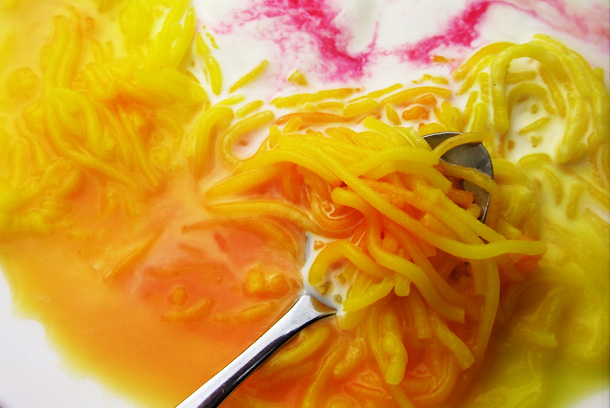
Kulfi with Falooda, the traditional pairing
Kulfis are also popularly served with Falooda, topped with some Rose sugar syrup. Originally, a Persian cold dessert consisting of thin Vermicelli noodles, is made from corn starch mixed in a semi-frozen syrup made from sugar and rose water. I’ve never been very fond of Falooda, finding them to be slithery… but then I fell in love with it one day as a Persian friend of mine introduced me to the home-made Falooda. The other day we attended a friend, Indranimashi’s (mentioned in my Luchi post for the amount of Luchis she had fed us) grandson’s birthday party, we were served Falooda with Vanilla Icecream along with some Rose Syrup. The noodles were soft and thick and the combination tasted pretty divine. (more about Falooda from Wiki)

Sprinkling hundreds-and-thousands
This time, Li’l Z became uncontrollable. She wouldn’t let me click. She was waiting right at the spot, wearing a ballet dress, wanting to taste the Kulfis. ‘Always taking pictures, always taking pictures… You are never letting me eat anything beautiful!’, she went on howling. Moulds went on missing and when they came back they had the little Sprinkles in them. Move away Pistachios, here comes the new age garnishing for Kulfis! Sprinkles, also called jimmies, are very small pieces of sugar strands used as a decoration on cupcakes, cookies, doughnuts, ice cream, frozen yogurt, and puddings. Hundreds-and-thousands pep up a dessert in a very novel way – it adds lot of childish spunk! These sugar-loaded pieces reminded me of a Bengali fusion dessert that I had prepared days back – Shondesh/Sandesh Pudding, as a guest post for Cook like a Bong.

Any festival calls in for celebrations, wherever you are living. So if colourful Kulfis have to compensate for the colourful Holis that we miss, so be it. As I write on Holi, Easter is being celebrated all over. Last year I made an Assorted Easter Egg Curry (the girls knew that it was cooked By Easter Bunnies!), where the Egg basket consisted of Bengali Egg Curry (yellow egg curry), Spinach Egg curry (green egg curry), Hot Spicy Egg Curry (red egg curry). I re-posted it on my Facebook Page today and a reader asked me ‘do you celebrate Easter?’ Born a Hindu but growing up celebrating all festivals and embracing all religion (a bit like the protagonist of Ang Lee’s movie Life of Pi), I just had one thing to say, We are on for all kind of celebrations! A bit of cultural mishmash only helps. Just like the Hundreds-and-thousands brightening up traditional Kulfis! (my Easter post)
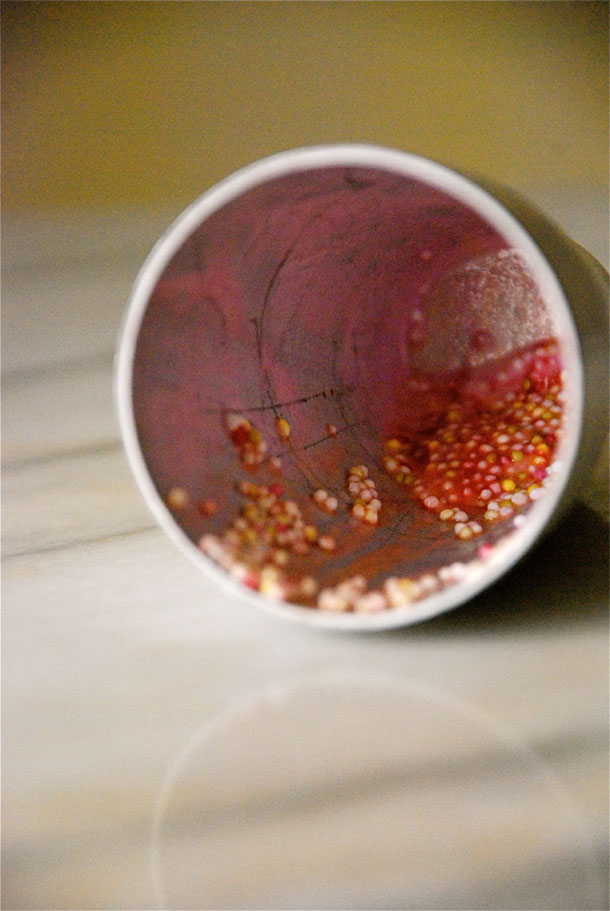
I’m flying off to Thailand tonight on an invite from Tourism of Thailand, courtesy Aviareps Group.My hectic itinerary includes a few island hopping in the Krabi region, tour around Koh Klang to experience the local village life, visit organic Sangyod rice farms, learn shallow water fishing, make traditional Hua Tong boats and last but not least taste some amazing Thai food and probably rope in a Thai cooking class as well. Do stay connected and look out for the hashtags #thaitales. Talking about celebrations and festivals, I have already started on my Thai crash cultural course in Dubai itself with Thai Consulate’s celebration of their cultural festival Songkran Splash at Westin the other day. And that makes me wonder, do you celebrate any festival from any other religion or culture apart from yours?
Unblogging it all… Ishita
Disclaimer: This isn’t a sponsored post, nor are there any affiliated links for any of the brands that have been mentioned in my blogpost. The subject, story, opinions and views stated here are my own and all images are from my personal album. While you enjoy reading my posts with lot of visuals, please do not use any material from these posts. Thank you for joining me on my daily food and travel journey on Instagram, Facebook, Twitter and Pinterest!
Try these dessert recipes from my blog: Gajorer Payesh or Carrot Pudding Moong Daaler Payesh or Yellow Lentil Pudding Bhapa Mishti Doi Gulab Jamum Rabri Other reads:How to make Thandai | Sanjeev Kappor Celebrate Holi with colourful recipes across the world |FoodeMag Holi in Nandgaon, Mathura and Vrindavan |FoodeMag Holi | Wiki Braj | Wiki



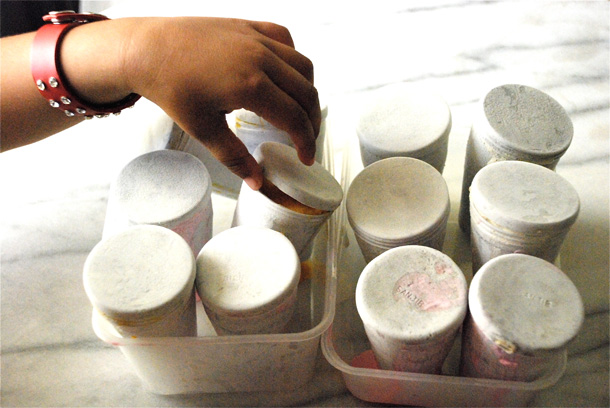


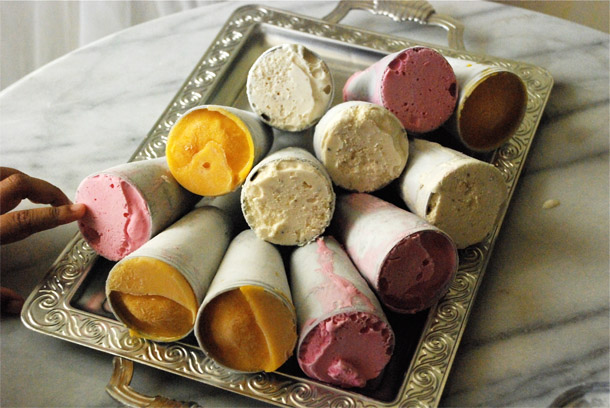

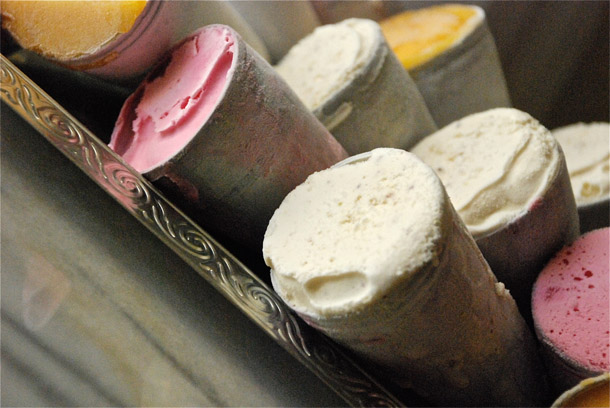




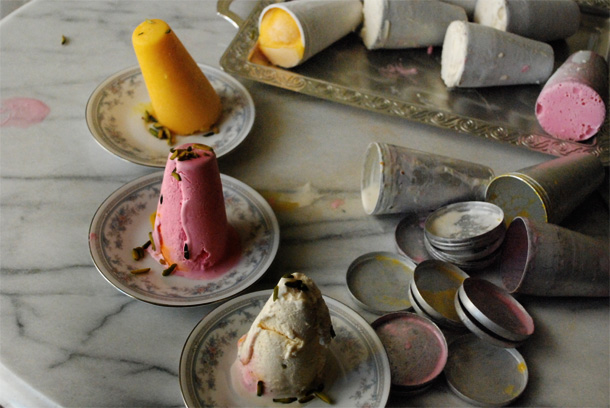

Bon Voyage !!
LikeLike
Thank you Sayan! Replying to you after coming back from the voyage – so slightly disoriented!
LikeLike
superb… kulfis are really like pichkaris! lovely post enjoyed reading abt your way of celebration.
LikeLike
A delayed reply as I had been travelling… thank you very much. And by the way, fabulous timing – I was looking for a Thandai recipe to link up:)
LikeLike
Fantastic colours….they look yumm
LikeLike
Thank you! I preferred the taste of the traditional ones the most, though the girls were gaga over the colorful ones:)
LikeLike
kulfi is always a delicious desert. it is a very popular frozen dessert from the Subcontinent and is popular in countries like India, Pakistan, Bangladesh, Nepal and Burma..we never cease to be show-offs.so in anytime on any occassion we can prepare it as u gave the instruction.gonna make it tomorrow. Thanks 🙂
LikeLike
A delayed reply – I had been travelling. Did you make them the next day? Did they turn out nice and colorful?
LikeLike
I love the colours of these…and especially the simple moulds. Lovely.
LikeLike
Thank you Claire! Would you believe that I’ve also used small muffin moulds to make these? Really cute and small kulfis, appropriate for kids’ party! Thanks for dropping by:)
LikeLike
Pingback: Apple Crumble
Oh I love those moulds! I’ll have to look out for them now. Love the colors xo
LikeLike
Thanks Kulsum! I don’t know whether I’ve mentioned but I’ve made these in muffin moulds too, in absence of the original Kulfi moulds. But yes, they look their best in these shapes:)
LikeLike
Such beautiful pictures and the beautiful colors!
LikeLike
Thanks Shumaila! The festival itself has naturally been inspiring:)
LikeLike
Lovely colorful post with colorful Kulfi’s. Thank you Ishita for the mention :), I loved your post and the moulds, not to miss the lil one adding the hundreds & thousands on the Kulfi…her way of eating the traditional Kulfi in her style :)!
LikeLike
Thanks very much. And you are most welcome. If I come across any post that makes my post meaningful, I always try to include them. This Thandai Ice cream does provide extra ‘content’!
LikeLike
always mean to go to the source and somehow partake in Holi – maybe next year! Love those ramshackle towers in that last kulfi pic. Beautiful.
LikeLike
I don’t know what happened to Li’l Z – she was behaving so weird. Crying and howling – kulfis were melting… first time in my entire blogging life, Foodgawker and Tastespotting have both accepted pic submissions on the same picture!
LikeLike
Pingback: Nowruz Buffet At Ezi Dzi | Celebrating Festivals in Dubai – Episode 1 |
Pingback: Eid Mubarak And A Few Of My Favourite Sweet Recipes |
Pingback: Purple Haze Yoghurt With Purple M&Ms |
Happy Holi! Those kulfis look amazing.
LikeLike
Thank you Irini and wishing you the same:)
LikeLike
What a colourful treat! I can only imagine how exciting it is for a child and even for the adult who gets to live over their childhood with the paint throwing of Holi. Loved the colourful kufis and those molds! And the photos were splendid Ishita!
LikeLike
Thanks very much for the wonderful compliment. Sad that nowadays I am not getting that much time to do all these experiments. May Holi fill up your lives with colour!
LikeLike
Pingback: Top 5 Nepalese Recipes - The Lady Traveller
Pingback: A Riot of Colours | Kolkata Kaleidoscope | IshitaUnblogged
Pingback: 9 Sweet Holi Recipes